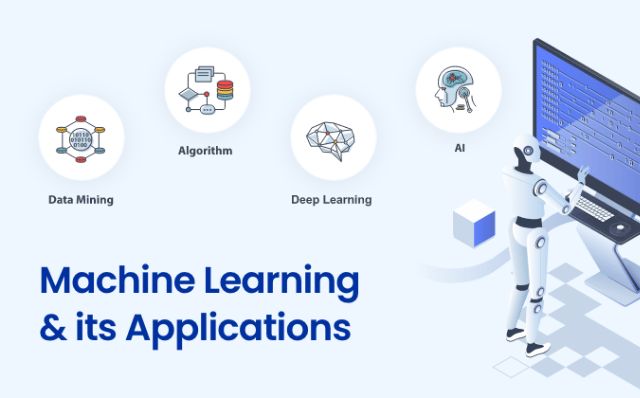|
Getting your Trinity Audio player ready...
|
The term artificial intelligence (AI), machine learning (ML), and deep learning are buzzwords in the tech industry these days. These terms often seem like they’re interchangeable buzzwords. Hence it’s crucial to know the differences. And those differences should be identified. Before we dig deeper to decode machine learning, let us make you aware of the terms artificial intelligence, machine learning, and deep learning.
| A Quick Glance at Some of the Interesting Facts Global Machine Learning Market Size Will Grow to USD 20.83 Billion by 2024. Some products you buy online are being suggested to you by artificial intelligence. Top 10 countries leading artificial intelligence race are China, USA, UK, Canada, Russia, Germany, Norway, Sweden, France, and India. |
How Are Artificial Intelligence, Machine Learning, and Deep Learning Related
Artificial intelligence (AI) is the ubiquitous discipline that covers anything related to making machines smart using cognitive computing, data mining, data science, convolutional neural network (CNN), or artificial neural networks(ANN).
Machine Learning is generally used alongside AI, though they are not the same thing. It’s a subset of artificial intelligence. Machine learning refers to systems that can learn by themselves. Methods that get smarter and smarter over time without human intervention. Deep Learning is machine learning but applied to large data sets. Most AI work now involves ML because intelligent behavior requires considerable knowledge, and learning is the easiest way to get that knowledge.
In brief: Deep Learning is a subset of Machine Learning, and both are subsets of Artificial Intelligence.
Machine Learning Approach
Arthur Samuel coined the term machine learning (ML) in 1959. It has come a long way since its inception and has become a buzzword in the tech industry. So what is machine learning anyway and what makes it so important?
The short answer is: Trying to teach machines, learn from experience. The ML algorithms imitate the natural pattern within the data, get insights, and predict the unknown for better decisions. Some of the common examples in our routine life are Apple iPhone’s assistant Siri, YouTube’s recommendations and advertisements, and Facebook’s friend suggestions. They all use ML algorithms. According to AI experts, everything from our jobs, to the food we eat, to the beer we drink, to the healthcare to identify cancerous tumors will be affected.
Read here: Sentiment Analysis Concept, Techniques & Tools for Businesses
Machine Learning is Everywhere!
Agriculture | Biological | Customer Support | Development | Education| | Healthcare | Industrial Manufacturing | Investment | Legal | Marketing | Navigation | Recruiting | Retail Finance | Sales | Security | Transportation/Logistics
Why Machine Learning Matters?
Most organizations have realized the potential of machine learning. By collecting insights from the data, organizations can work more efficiently or gain an advantage over competitors. Within the scope of this blog, it would be (almost) impossible to discuss and highlight all the applications of ML. We have listed out some of the fascinating and famous machine learning applications:
Customer Segmentation
Rather than relying upon a marketer’s intuition to separate customers into groups. ML algorithms such as clustering and classification group customers into characteristics based on specific variations among them. These characteristics account for customer differences across multiple dimensions, such as demographics, age group, and browsing behavior. Discerning these traits to patterns of purchasing behavior allows data-savvy companies to drive highly personalized marketing campaigns that are more effective at promoting sales than generalized campaigns.
Dynamic Pricing
It is also known as demand pricing. It is the application for flexible pricing items based on the factors like product demand, seasonality, location, or whether the customer has engaged with a marketing campaign. It requires a vast amount of data about how different customers willing to pay for a product or service changes across a variety of situations. Companies like airlines and ride-share services such as Uber, Ola have successfully implemented dynamic price optimization strategies to maximize their revenue.
Fraud Detection
Fraud detection is a challenging problem. Fraudulent transactions are rare; they represent a tiny fraction of action within an enterprise. The challenge here is that a small percentage of business can quickly turn into significant money losses without the appropriate tools and systems in place. Criminals are cunning and crafty. As traditional fraud detection systems fail to pay off, fraudsters have learned to change their tactics. The great news is that with advancements in machine learning, systems can learn, adapt, and uncover emerging patterns for preventing fraud.
Image Classification
Image classification uses ML algorithms to assign a label from a fixed set of categories to any input image. It has a broad range of business applications including satellite imagery classification, social media photo tagging, informing medical diagnoses, automatic image captioning, and more.
Product Recommendation Engine
Recommendation engines are another significant way that machine learning proves its business value. Machine Learning capabilities offer online shoppers with personalized product recommendations while adjusting pricing, coupons, and other incentives in real-time. That’s because recommendation engines scrutinize a large volume of data to predict how likely any given customer is to purchase an item. Then recommends those things to the user. The outcome is a customer experience that encourages better engagement and reduces churn.
Some Closing Thoughts
There are few things to keep in mind before using ML algorithms. A single ML algorithm is not the solution to all the problems. It can be developed and deployed for a particular purpose. It is impossible to make swift, accurate predictions. Remember that, it learns through historical data. The bigger the data and the longer it is exposed to these reliable data, the better it will perform.
As we learn to interpret algorithm derived decisions, we can learn to help people in new ways.
At Esferasoft, we help clients find and capture hidden value from data through a unique blend of business intelligence, machine intelligence, and machine learning algorithms. Some of the services we provide include chatbot development, automated image captioning, and emotion analysis.

